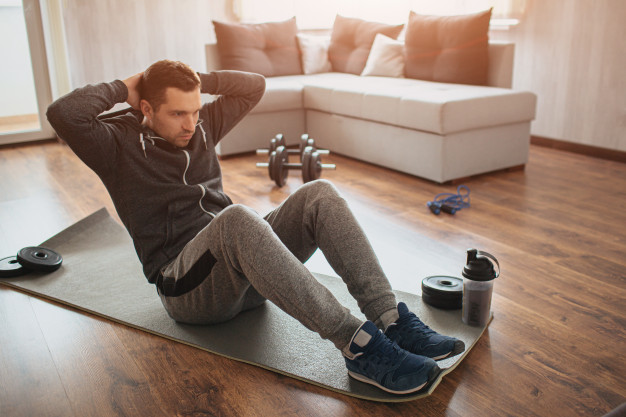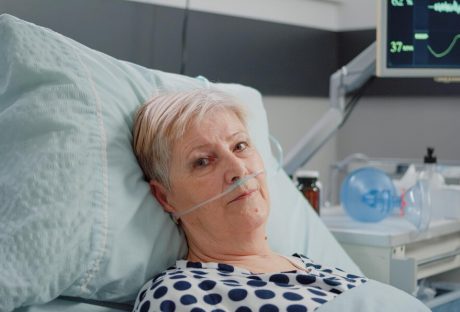There’s no denying that quarantine weight gain is real. A survey found that close to 36% of the 19,903 people surveyed in over 140 countries shared that they have gained weight while in lockdown. During the height of the COVID-19 pandemic, many people were committed to doing home workouts.
However, since most are not familiar with the training that would best suit them, many found it difficult to stick to a regimen. A considerable number of gym members haven’t been able to go back to gyms since the onset of the pandemic over a year ago.
Lockdown Weight Gain Is a Serious Matter-
Weight gain during the lockdown has signaled the waning motivation of individuals to work hard to keep their bodies healthy, and both mental and physical fatigue has become increasingly prevalent.
With increased levels of stress, gaining unnecessary weight only serves to put more strain on people’s health. This is why it’s necessary for people to take their health seriously. Obesity is a huge risk factor for COVID infection and complications.
Here are a few tips to start putting your health and wellness first:
Stick to an Exercise Routine:
It can be challenging, but you have to force yourself to stick to a workout routine. If you have fears of being exposed to the virus in a public environment, there are plenty of exercises that you can do at home.
In fact, you can download mobile apps to help you connect with other people so you can have a workout buddy to motivate you. You can also enroll in virtual workout classes if it helps you stay focused. If you prefer working out at home, you can use apps to help you craft a plan.
Start slow, and set aside at least 30 minutes a day, three to four times a week to focus on your workout.
If you prefer doing workouts with a personal trainer, you can ask your gym if they offer such a service.
If not, there are a number of personal trainers who advertise their services online. Some of them are willing to do online sessions. Try doing a variety of exercises, including yoga, bodyweight exercises, or running. Walking your dog for at least 30 minutes a day can help you lose weight, and dancing is also a great way to shed off some fat. You can watch YouTube videos of Zumba classes to get started. Not only will it help you lose weight, but it will also give your mental health a boost.
If you have any illnesses that may be exacerbated by exercise, consult your doctor. Ask for recommendations about what exercises would work best for your present condition. It’s okay if you need to start slowly; what’s important is that you make a change from leading a sedentary lifestyle.
Invest in Your Nutrition:
On top of your workout routines, you should also invest in your nutrition. Make sure that you are eating adequately and appropriately. Stick to a nutritional plan that best suits your health needs. It can be tempting to binge on comfort food because of the emotionally draining situation that we’re currently in, but your best bet would be to consume ample amounts of fruits and vegetables while cutting back on sugary food items and processed meals.
It might be a good time to develop your skills in the kitchen and get cooking. Making home-cooked meals is a great way to help you stick to your diet. In fact, a study has shown that individuals who consume home-cooked meals are less likely to gain weight.
Since you are in quarantine, use the time you have at your hands to experiment. Start meal planning so you can squash those cravings that you have late at night. Aside from food, you can also take supplements to help you lose weight. Choose healthy supplements that help you burn fat faster. You can learn more here.
Remember, you should aim for a balanced diet. It is unhealthy to follow crash diets that could affect your immune system. If you want to curb your eating routine by adopting methods such as intermittent fasting, be sure to ask your doctor first. While you may want to experiment in the kitchen, experimenting with new diets can be risky.
You need to be properly guided on how you should start and progress on a particular diet.
Follow a Routine:
Quarantine fatigue can cause you to lose focus. You can try to shake it off by following a routine. Ever since the pandemic disrupted our regular routines, many found it hard to cope, which resulted in behaviors that caused them to gain weight.
One way to combat this is to set up a new daily routine, which can help you maintain a sense of normalcy. You can start by setting a time for when to wake up, do chores, eat meals, work out, attend work or school, and sleep.
Once you get the hang of it, you can slowly incorporate meal planning to ensure that you are getting the right food in your system, helping you fight off obesity.
Getting the right amount of sleep can also help you strengthen your immune system. Aside from giving your body plenty of rest, following a sleep routine helps to fight off midnight cravings and prevent weight gain.
You have to make sure that you are getting quality, restful sleep so that your body is able to rest and recuperate. This way, you will be ready to take on a new day.
Endnote:
Now you have a deeper understanding of what quarantine weight is and how it can affect your risk for developing other chronic diseases. Try not to be too hard on yourself, as the last year has been difficult for everyone. Focus on formulating a new routine and sticking to it, and you’ll start seeing a difference in your physique in no time.
Read Also:

























